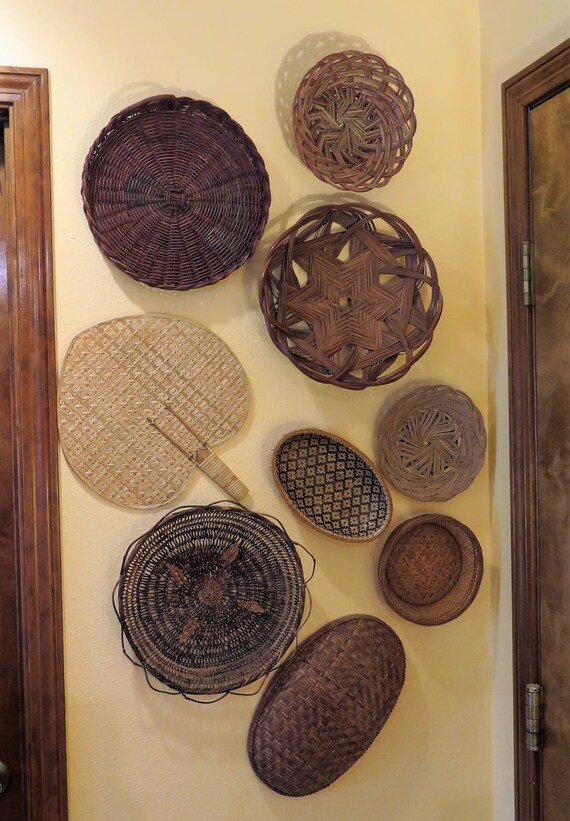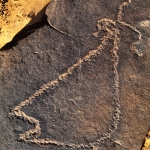The Ancient Land CHAD and its art forms
As old as several million years, find its existence
since BC has always been place of interest during pre-historic time.
Do not get surprised…………………….. What I am offering
today is a form of art which is very historic and in present 21st
century also, we find the smell of pre-history.
Today’s interesting topics are
- · Cave wall paintings
- · Clay pottery made without potters wheels
- · Basketry weave work
- · Stencil painting
Chad Location and Origin
Chad with its existing capital N’Djamena (Chari-Baguirmi),
got its sovereignty from France in 1960, with its official language French,
surrounded with 6 countries: Libya, Sudan, Niger, Cameroon, Central African
Republic, Nigeria; enhances its beauty with Sahara dessert.
Occupying huge land area of 1,284,000 square
kilometer with very less population of 10,975,648; approx. density of 9 people
per square kilometer.
"All water in
Pre-history and All Sand now” is the right proverb to denote Chad.
Art forms from Pre-historic Chad
"A state not
developed but only shown existence, yet idiosyncratic”.
12,000 to 9,000 to
4000 BC, witnesses here the existence of initial sense of aesthetics
development of art forms.

A belt of at Ennedi
Mountains, sandstone plateau spread across 35,000 square Kilometers is rich with rock
art.
I It dates back to 2000
and more recent to it.
All these rock art
are the good devotion of aesthetics while using lines to make outer drawings
and natural colours to fill it.
The use of geometric
lines to fill the space and the combinations of using the colours and the lines
takes the drawing to appreciable world.
Motifs were all taken
from surroundings and hence horses, hunting, dancing, merry making,
celebrations, bulls, plants, horse riding, and cattle in human shelters.
The rock paintings,
familiars to a way of depiction of images by a child, in the state of absence
to enjoy and depict what they see around, shows the very initial and innocent
stage of art forms, which are pure and pious.
And these such art
forms we see at rock art.
Chad : Present Day art forms.
It may be categorized
in two categories.
Functional Art:
Baskets, clay pots, woven fans.
Art for tourist: Art
depicted in lifestyle products, greeting cards, post cards, paintings and
jewelry and textile art.
The Clay Pots:
Pots! As we all know
how it is made?
A potter’s wheel,
clay over it and the circular movement of wheel turns the clay to a pot.
 No, it’s different in
Chad. Chadians make this exclusively with hand without using wheels and instead
of using kiln, they burn it pieces of straw and wood put on fire. Later, they
cover it with sand overnight.
No, it’s different in
Chad. Chadians make this exclusively with hand without using wheels and instead
of using kiln, they burn it pieces of straw and wood put on fire. Later, they
cover it with sand overnight.
Basket and woven
Fans:
These are turned to
beautiful shapes and coloured with pigment from plants, flowers and other
natural dyes. Colours are usually, purple, and green. 


 All these are made with straw.
All these are made with straw.

 All these are made with straw.
All these are made with straw.
Art for tourist: Art depicted
in lifestyle products, greeting cards, post cards, paintings and jewelry and
textile art.
These art pieces are
made as supplements by women stays at home and supports an extra hand of
earnings.
Stencil painting made
using X-Ray paper and are used to make stencils to develop beautiful paintings.
An organization
“Abeche” is devoted to develop cross stitch patterns of chad and animals
familiar to all chadians. These cross stitches are placed very tight which is
the beauty of the art.
Chadian Literature:
Folk Stories.
There are many folk
stories prevailing at Chad.
I picked some really
interesting ones here.
The Sheep, the Goat
and the Dog
The sheep, the Goat and the dog wanted to
travel to Sarh. A truck Arrived. The Sheep asks what the price of the trip
is. The driver wanted them to pay five
hundred Francs each. So the Sheep gave him five hundred Francs. The Dog gave
him a thousand Francs. The Goat asks to pay on arrival, and the driver accepts.
And so the truck
leaves. When, the truck arrived in the town of Sarh, the sheep jumped out of
the truck and ran away. The Goat ran away as fast as he could without paying.
Then the dog came to drive to ask for 500 francs he owes to him. Driver said,
“Ask the goat for it”.
This is why today,
whenever a truck arrives in a village, the goat runs away, the dog runs after
the truck, and sheep does not move, because he paid for the fair.
Source: the book Contes
du Tchad : Goundi Tome 2
Courtesy: Chad Museum



























